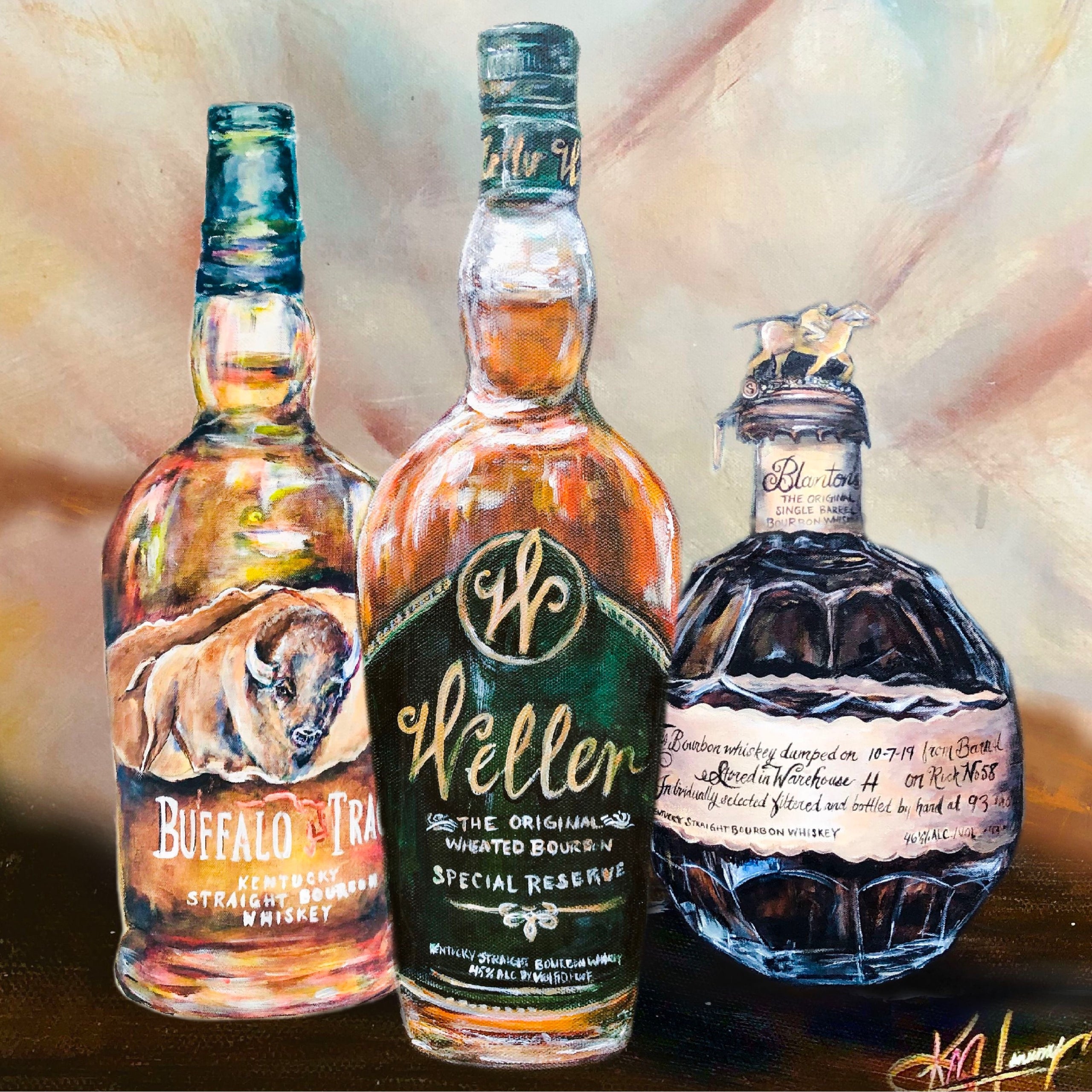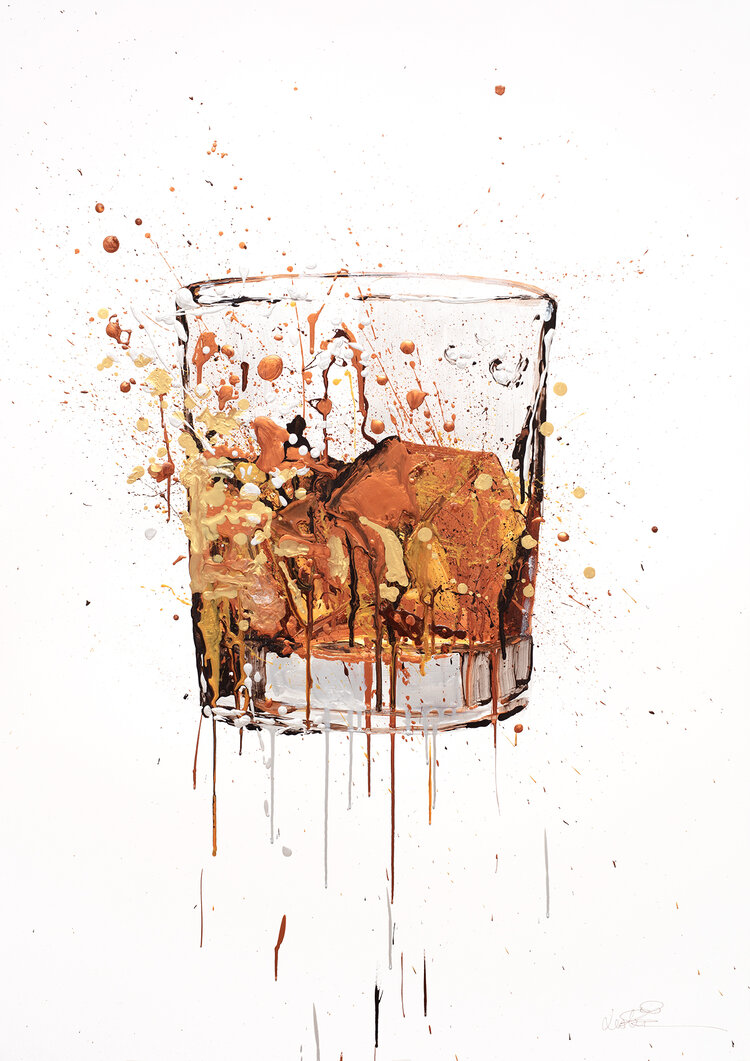The Appeal of Realism Art: A Deep Study Whiskey's Rich Heritage
The Appeal of Realism Art: A Deep Study Whiskey's Rich Heritage
Blog Article
The Relevance of Whiskey Art in Celebrating Heritage and Workmanship in the Beverage Sector
The intricate connection between bourbon art and the celebration of heritage and workmanship within the drink sector can not be overstated. Through attentively developed tags and bottles, whiskey brands encapsulate their historic roots and the artisanal skills that define their manufacturing techniques.
The Historical Origins of Whiskey
At the heart of bourbon's appeal exists an abundant tapestry of historical origins that map back to old people. The origins of bourbon can be connected to the purification techniques of the Sumerians and Babylonians around 2000 BCE, where very early types of fermented grain drinks started to emerge. It was in the Middle Ages that the art of purification progressed considerably, especially in Ireland and Scotland, leading to the development of scotch as we know it today.
The term "bourbon" itself obtains from the Gaelic word "uisce beatha," implying "water of life." This phrase highlights the cultural relevance of bourbon in Celtic societies, where it was frequently related to routines, events, and common bonding. By the 15th century, purification came to be an acknowledged craft within reclusive neighborhoods, leading the way for the establishment of lawful distilleries.
As trade paths increased, bourbon's popularity expanded, transcending local borders and catching the passion of lovers worldwide. Bourbon Art. This historic journey shows not just the workmanship behind bourbon production yet additionally its integral function in social and cultural contexts, marking it as a substantial drink throughout history
Artistic Expression in Branding
Bourbon branding stands as an engaging intersection of artistry and commerce, where visual identity plays a vital function fit consumer perception. The looks of bourbon labels, product packaging, and advertising products mirror not only the brand name's tale however also its core values and heritage. Via imaginative expression, distilleries communicate a narrative that resonates with consumers, evoking feelings and sparking connections.
Using color, typography, and imagery in branding offers to separate products in a saturated market. Standard themes may evoke a feeling of credibility and craftsmanship, while modern-day styles can indicate innovation and forward-thinking. This tactical artistic direction improves brand name acknowledgment and commitment, permitting customers to forge a personal connection with the bourbon they pick.
In addition, imaginative expression in branding frequently offers as an event of regional heritage. Distilleries regularly include neighborhood symbols or historical references into their styles, producing a feeling of area that invites consumers to take part in a wider cultural experience. Eventually, the virtuosity behind whiskey branding not just boosts aesthetic charm but likewise enhances the total story of the brand, promoting a deeper admiration for the workmanship and heritage embedded in each container.
Craftsmanship in Container Design
The artistry obvious in scotch branding expands past visual identification to encompass the craftsmanship entailed in container layout. Each bottle functions as a vessel not simply for the spirit within, however additionally for the story it tells regarding its custom, beginning, and top quality. The layout procedure needs precise attention to detail, as components such as closure, shape, and material contribute significantly to the overall perception of the bourbon.
Craftsmanship in container design includes selecting premium glass that can enhance the bourbon's color and quality, while additionally offering a tactile experience for the consumer. The silhouette of the container have to be both functional and visually enticing, typically showing the heritage of the brand name. Many distilleries choose unique forms or embossed logos that evoke a sense of authenticity and history.
In addition, the tag design and typography play an important duty in interacting the brand's story. Realism Art. A well-crafted container not only captivates the consumer's eye but also strengthens the brand's dedication to high quality and custom. By doing this, the craftsmanship of container style ends up being a crucial facet of the bourbon experience, combining artistry with an extensive respect for heritage
Cultural Importance of Scotch Art
Celebrating tradition and workmanship, the social relevance of whiskey art goes beyond simple visual appeals, intertwining with the social and historic stories of the regions from which it comes from. Each container offers as a canvas, showing the special stories, folklore, and practices that have formed regional whiskey-making practices. The elaborate designs typically show the heritage of the distillers, incorporating symbols and motifs that resonate with the society and worths of their areas.

Furthermore, whiskey art plays a vital role in common gatherings and parties, working as a substantial web link between individuals and their shared experiences. By appreciating the virtuosity in bourbon product packaging, customers grow a deeper understanding and respect for the craft, ultimately enhancing their satisfaction of the beverage itself.
Modern Trends in Bourbon Discussion
In recent years, the discussion of scotch has actually progressed to show contemporary preferences and patterns while still honoring typical craftsmanship - Bourbon Art. Distilleries are significantly focusing on visual elements that improve the total alcohol consumption experience, linking the gap between heritage and modernity
Ingenious bottle layouts have actually emerged, commonly integrating lasting products and artistic tags that inform engaging stories. Many brand names now collaborate with neighborhood musicians, instilling their items with special visual expressions that reverberate with customers. In addition, limited-edition releases are commonly packaged in collectible containers, adding worth and charm for connoisseurs.

Conclusion
Finally, scotch art works as a crucial avenue for sharing the heritage and craftsmanship inherent in the drink industry. Via intricate branding, ingenious bottle layouts, and culturally considerable artistic aspects, bourbon brands properly honor their traditions and get in touch with consumers. This imaginative narrative not only elevates the recognition of whiskey yet likewise reinforces area identification and satisfaction amongst producers. Inevitably, scotch art plays a crucial function in preserving and commemorating the rich cultural tapestry of whiskey-making.


Workmanship in bottle style includes selecting high-grade glass that can enhance the whiskey's shade and quality, while likewise offering a responsive experience for the customer. In this method, the workmanship of bottle style ends up being a crucial element of the whiskey experience, merging virtuosity with an extensive regard for heritage.
In final thought, whiskey art offers as an essential channel for revealing the heritage and craftsmanship inherent Whiskey Art in the drink market.
Report this page